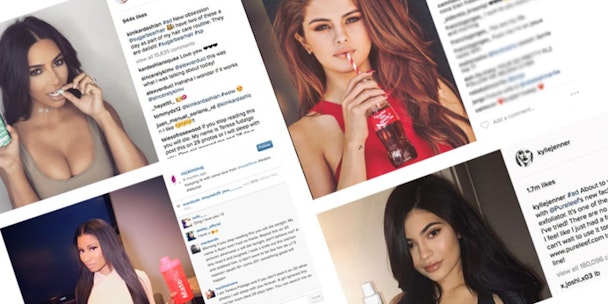The three biggest influencer marketing mistakes brands are making
The past few months have seen yet another wave of influencer scandals. There was Olivia Jade’s connection to the university bribery scandal, Logan Paul’s “go gay for a month” stunt and, most recently, the ‘surprise proposal’ that had been pitched to brands before it had even happened.

The three biggest influencer marketing mistakes brands are making
Add to this the fake-follower scandal – epitomized by the dubious followers of this year’s UK Love Island cohort – and it’s clear that the risks of influencer marketing are real and substantial.
Understandably, brand managers, including the chief marketing officer of Samsung, are now wondering if they are really getting what they pay for and if influencer marketing is still an effective tactic. They’re asking pertinent questions: “how do I know the likes or other blind engagements on a post are really for my brand as opposed for the influence?” and “is this activity driving business outcomes?”
There have always been ways to do influencer marketing more safely. But the ‘gold rush’ of the trend – driven by the need to find new ways of reaching people due to changing media consumption habits, declining organic platform reach and the rise of ad-blocking technology - has resulted in some fast and loose tactics.
Above all, the greatest threats to brands who employ influencers are misalignment, over dependency, and lack of diversification.
Misalignment
Most brands and agencies are too reliant on data-based metrics for influencer selection. They treat influencer marketing as a simple media buy. Metrics such as follower count, engagement rate and views are held with the most importance, while they completely ignore the additional two key factors in influencer selection, character, and creativity. This puts them at risk of misalignment.
The best practice is to get to know influencers beyond their numbers – like dating before marrying. Search for longer-lasting, mutually beneficial relationships with influencers who embody the character and creativity of the brand.
Overdependency
Many brands in the early days, and many today, simply cede all control of their product and brand to the “creativity” of the influencers with the rationalization that the influencer knows how to best communicate to their audience segment.
Together with payment based on reach and engagement, no detailed background checks and short-term, non-committal contracts, it’s a recipe for disaster. The opposite is what’s needed here - something Unilever picked up on when it committed to longer-term relationships with its own influencer cohort.
Lack of diversification
To limit the risk of misalignment, consider working with multiple micro or nano influencers who are able to resonate with specific audiences and simultaneously reach scale. This way, if one influencer becomes a brand risk, fewer people are exposed to the gaff and the public relations risk is likely significantly diminished.
This philosophy is similar to the way you’d manage your stock portfolio – you wouldn’t risk all your savings on an investment in only one public company. All of this said, quality control is still essential. This route requires more due diligence, dating more people and marrying many, but the benefits are numerous too.
At the end of the day, we are dealing with human relationships and influencer marketing needs a human approach. Brands and agencies alike need to put the work in to really get to know the influencers they work with, spend the time vetting their past content for character and creativity fit, and commit to a longer term relationship that’s mutually beneficial to get the most out of the influencers they work with.
It’s not hyperbole to say that the stakes are sky high. Today, Generation Z spends a staggering 15.4 hours a week on their mobile phones with the majority of that time in social media. It is very possible that the only interaction a Gen Z shopper may have with your brand is in social media via an influencer.
If you can put the rigor into identifying the influencer that truly aligns not only in audience reach but also character and creativity, it can become what influencer marketing was always intended to be – truly authentic brand/influencer partnership with the ability to extend beyond a single post into a long-term, reciprocal partnership producing on-brand scroll-stopping content.
Amy Luca is the chief executive of TheAmplify
